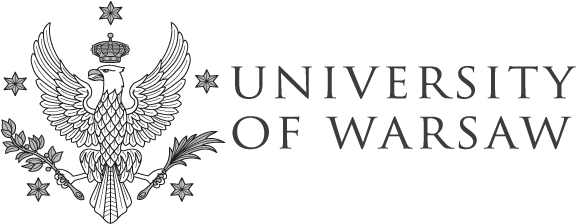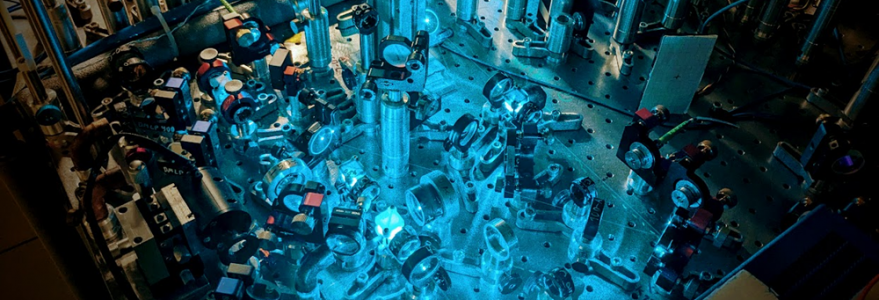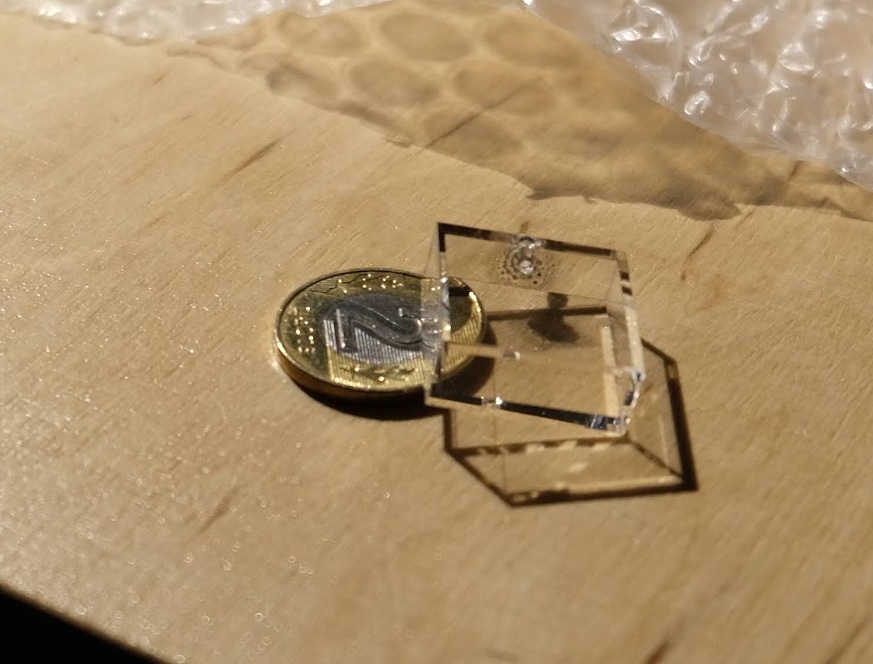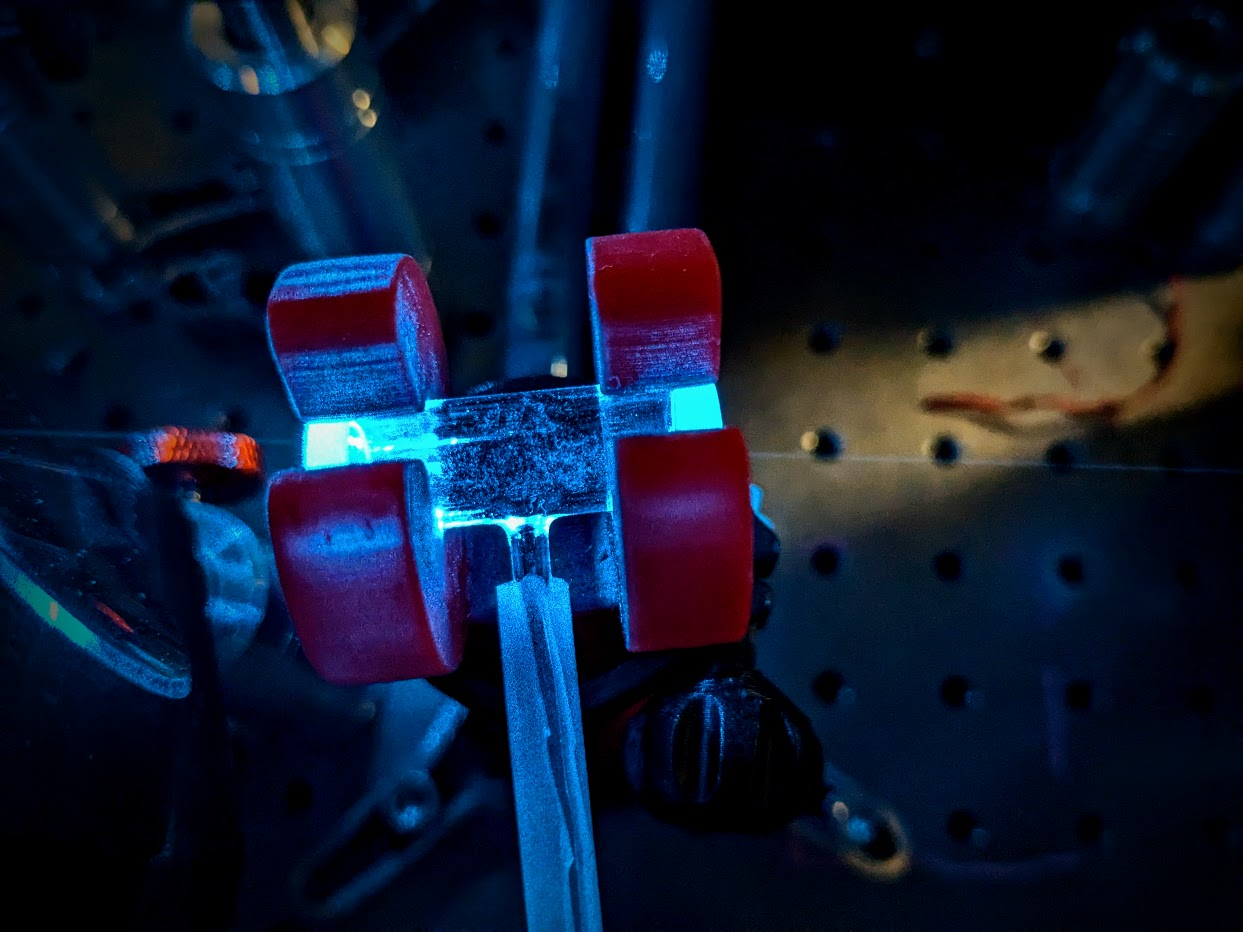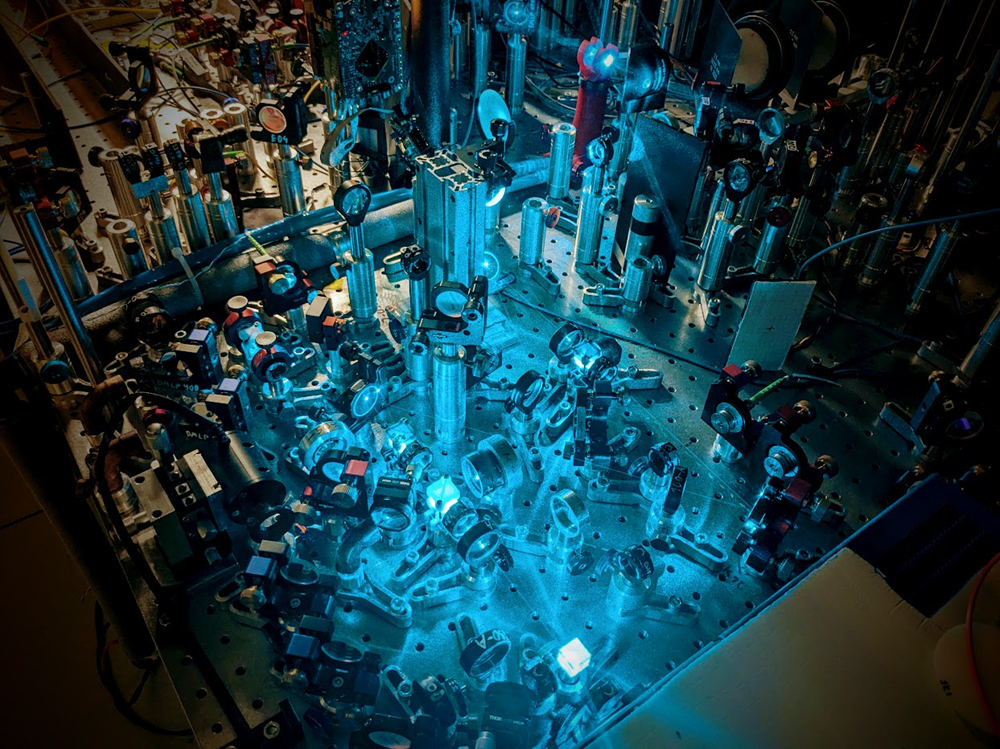Researchers from the Faculty of Physics, the Centre of New Technologies and the Centre for Quantum Optical Technologies at the University of Warsaw have developed a new type of all-optical radio receiver based on the fundamental properties of Rydberg atoms. The results of the study, involving Prof. Wojciech Wasilewski, Prof. Michał Parniak, Dr Mateusz Mazelanik and Sebastian Borówka, were published in the journal “Nature Communications.” The research marks a new chapter in the technological implementation of quantum sensors.
The new type of receiver is not only extremely sensitive but also provides internal calibration, and the antenna itself is powered only by laser light.
Synchronised atoms
Metal antennas are commonly used to receive transmissions, which redirect the energy of incoming waves to the receiver. Energy absorption enables electronic measurement of the amplitude and phase of the waves. Today, this measurement is performed by converting (mixing) frequencies. The electrical signal from the antenna, which vibrates billions of times per second (at a gigahertz frequency), is directed to so-called mixers, which enable demodulation – the transfer of the amplitude and phase of very fast vibrations to signals with a lower frequency, vibrating only millions of times per second (at a megahertz frequency).
As the researchers indicate in their experiments, they replaced the antenna and electronic mixer with a new medium – a kind of artificial aurora borealis. A piece of rubidium was placed in a glass cell, which had been thoroughly pumped out of air. Then atoms were released from the piece of rubidium and flew into the glass cell. They were then harnessed for a carefully planned performance. Each rubidium atom has one fairly free electron, which is subjected to a complex choreography of “dancing” around the atomic nucleus and core composed of the remaining 36 electrons. Three different lasers act as “music in this dance”. Their vibration frequency is ultra-precisely stabilised to the possible frequencies of electrons orbiting in rubidium atoms, as determined by the laws of quantum mechanics. The electrons “hear” such a “melody” that they spend selected parts of the laser “dance beats” in a very distant orbit – in so-called Rydberg states. In these orbits, their trajectory is very easily curved by microwaves. Specifically, by radio waves that are in “rhythm” with the laser “melody” being played. However, each electron in a Rydberg state – elevated to a high orbit – cannot remain there indefinitely and must eventually fall like a decommissioned satellite. Electrons affected by radio waves fall along a different trajectory and emit infrared radiation different from that used by lasers, making them easy to detect. Most importantly, the phase of the microwaves is reflected in the phase of the emitted infrared radiation: if the radio waves have “struck” earlier within a set cycle, the electrons also fall slightly earlier and emit radiation earlier.
The challenge that was solved in the latest publication was to build a system for precisely controlling the lasers and the “dance” of electrons so that the “rhythm” of the electrons’ movement never slowed down or accelerated in an uncontrolled manner. For this purpose, a series of “metronomes” were used. For each laser, a special vacuum tube was constructed, terminated with very good mirrors, with which light is reflected several thousand times. Such a tube, called an optical cavity, like an “organ pipe” or a “violin string”, selects only vibrations of a specific frequency. In the tubes used here, two fields vibrate simultaneously – a stabilized laser and a reference laser, whose frequency is precisely electronically matched to the period of the lowest orbit in which electrons can orbit the nucleus and core of rubidium. In addition, a special crystal is used to mix frequencies to produce reference infrared radiation from the lasers used. The crystal is not sensitive to microwaves, so the infrared it emits has a slightly different frequency than that emitted by rubidium atoms. Practical measurement required the use of an additional reference laser, against which the infrared emitted from the atoms and the reference infrared from the mixing crystal were measured. Such a relative measurement – an optical heterodyne – made it possible to obtain the amplitude and phase of the fields under study. In turn, these can be used to directly calculate the amplitude and phase of the received microwaves.
At the heart of the experiments presented, i.e., in the rubidium cell, there are no metal elements that conduct electricity and strongly disturb radio waves. All that is needed to convert radio waves into infrared radiation is rubidium vapour, a sealed enclosure and lasers. In the future, the detector could take the form of a mere thickening on an optical fibre, through which all the necessary lasers will be supplied, as well as the received infrared radiation, sent in the opposite direction in the optical fibre. The final measurements and corrections will be carried out even several dozen metres away from the radio fields, enabling extremely discreet, non-invasive measurement and reception of the radio field.
This invention may have serious consequences for the techniques of precise calibration of microwave fields. Thanks to non-invasive measurements, it will be possible to record weak fields without simultaneously disturbing them with a metal antenna.
Research on Rydberg atoms
Scientists at the UW Faculty of Physics, the Centre of New Technologies (CeNT UW) and the Centre for Quantum Optical Technologies have been designing and demonstrating new protocols for detecting microwave fields using Rydberg atoms for several years. The team is succeeding in overcoming technical barriers and developing new detection methods offered by these revolutionary devices. The scientists are participating in the search for applications for this new technology, pointing to its ease of calibration, high sensitivity and measurement accuracy, and the prospect of miniaturisation of the devices. Since the beginning of 2025, the team led by Prof. Michał Parniak has also been commercialising this technology in a project commissioned by the European Space Agency.
Scientific publication
S. Borówka, M. Mazelanik, W. Wasilewski, M. Parniak, Optically-biased Rydberg microwave receiver enabled by hybrid nonlinear interferometry, “Nature Communications” (2025)
https://www.nature.com/articles/s41467-025-63951-9
doi: 10.1038/s41467-025-63951-9
The Quantum Optical Technologies (FENG.02.01-IP.05-0017/23, 2024–2029) project is carried out within the Measure 2.1 International Research Agendas programme of the Foundation for Polish Science, co-financed by the European Union under the European Funds for Smart Economy 2021–2027 (FENG).

The research is also one of the central results of the SONATA17 project financed by the National Science Centre, Poland.


